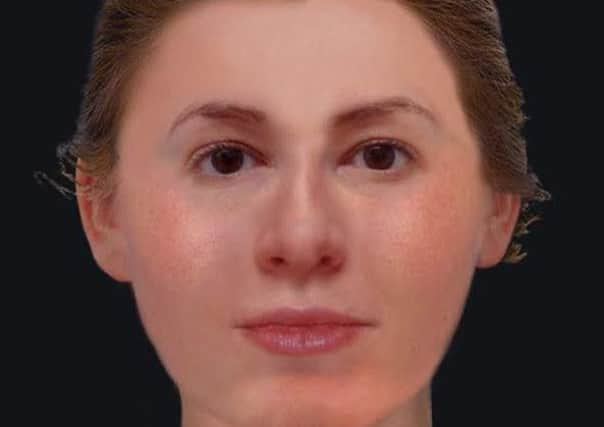Exhibition puts spotlight on Edinburgh's ghoulish past


Now the unknown young woman whose remains were discovered around 200 years later has been given a starring role in a major new exhibition in Edinburgh.
A lifelike image of her face created from her skull, which is part of the city’s official archives, has been revealed for the first time – to highlight the dark side of the city’s medical history.
Advertisement
Hide AdAdvertisement
Hide AdThe woman, who was buried directly opposite the then Edinburgh Royal Infirmary, was one of the victims of an underground trade in human remains after her teeth were stolen by staff at the hospital to supplement their wages.
It is thought cash-strapped porters, nurses and washerwomen may have been involved in the illegal practice to capitalise on the growing market at the time for “real” false teeth.
World-leading facial reconstruction experts at Dundee University have used the latest forensic techniques on the skull, which was clearly sliced open during her post-mortem, to create the image.
It has now gone on display at the City Art Centre along with more than 300 other objects and works of art drawn from the capital’s vast archives, including Walter Scott’s childhood rocking horse, Deacon Brodie’s family bible and Robert Louis Stevenson’s smoking jacket.
The remains of the woman, one of the city’s earliest autopsy patients, were discovered along with the remains of a number of other bodies, in 1993 during a dig at the site of the graveyard of the former Lady Yester’s Church in the city’s Old Town.
The cause of death of the woman, who was believed to have been in her mid-twenties or early thirties when she died, could not be determined.
But experts’ analysis found clear evidence that her front teeth had been forcibly removed before her burial in the kirk yard opposite the hospital, which opened in 1729 on the thoroughfare now known as Infirmary Street.
John Lawson, the city archaeologist, said: “In the 18th century, Edinburgh Royal Infirmary became one of the UK’s most important hospitals. The city was quickly establishing a name for itself as a centre for medical excellence and the findings of the hospital physicians significantly developed enlightened medical research.
Advertisement
Hide AdAdvertisement
Hide Ad“However, this quest to advance medical science had a well-known dark side. It could be difficult to trace a deceased patient’s relatives, and indeed many families were too poor to provide a proper burial. As the move towards grave-robbing in the later 18th and early 19th centuries tell us, such readily available bodies for research were in great demand. This led medics and hospital staff to meddle with Edinburgh’s criminal underworld.
“This woman’s teeth were almost certainly removed post-autopsy, most likely by one of the hospital porters. Help was possibly provided by one of the nurses or washerwomen charged with preparing the deceased for burial. These staff were poorly-paid and corruption was commonplace. Such teeth, therefore, made a tempting and significant addition to a wage packet.”
Lynne Halfpenny, director of culture at the city council, said: “This exhibit reveals an early move towards criminal medical practice, with the subject’s teeth removed illicitly for money-making purposes. By putting a face to the finding, we hope to introduce visitors to this grisly but ultimately important part of the Old Town’s rich history.”
Edinburgh Alphabet: An A-Z of the City’s Collections runs until 8 October.